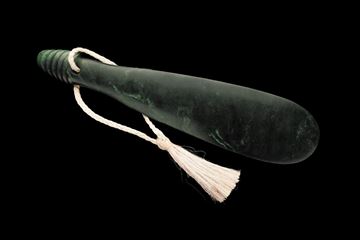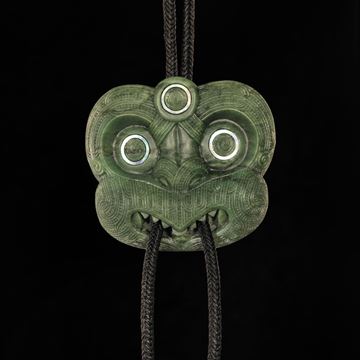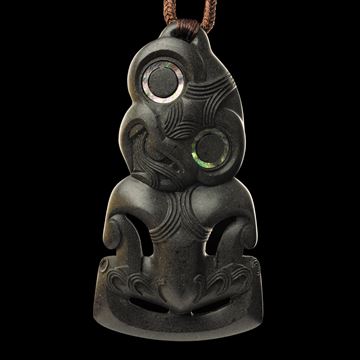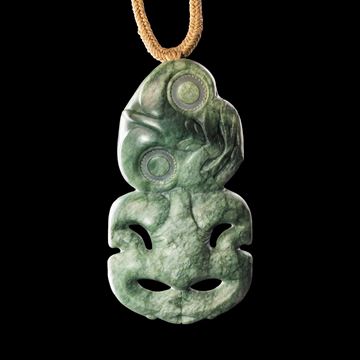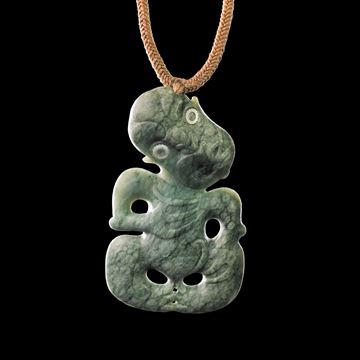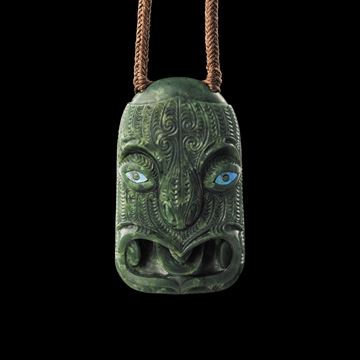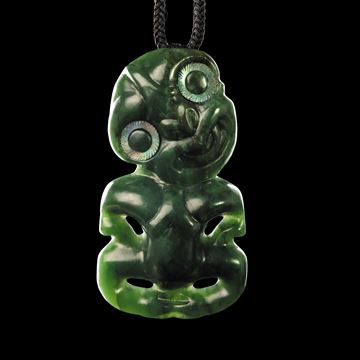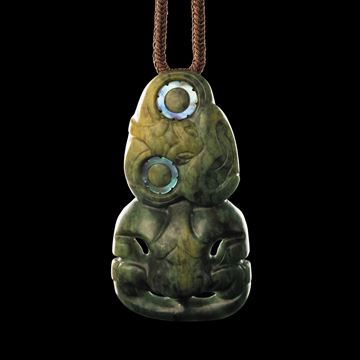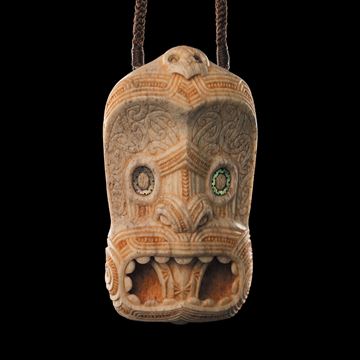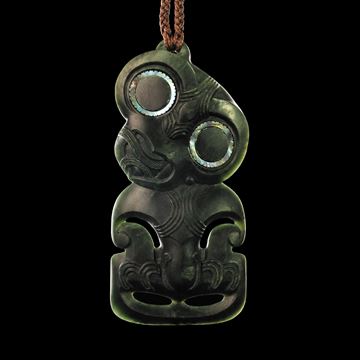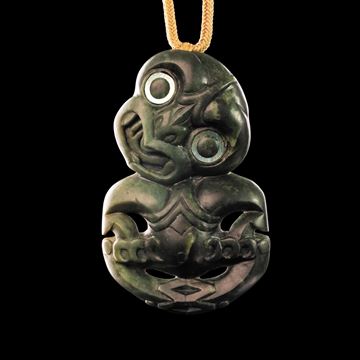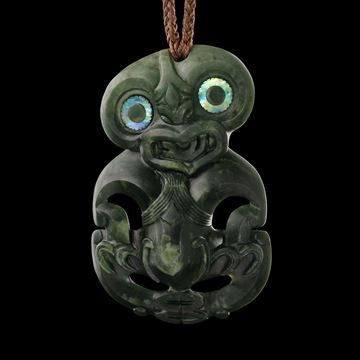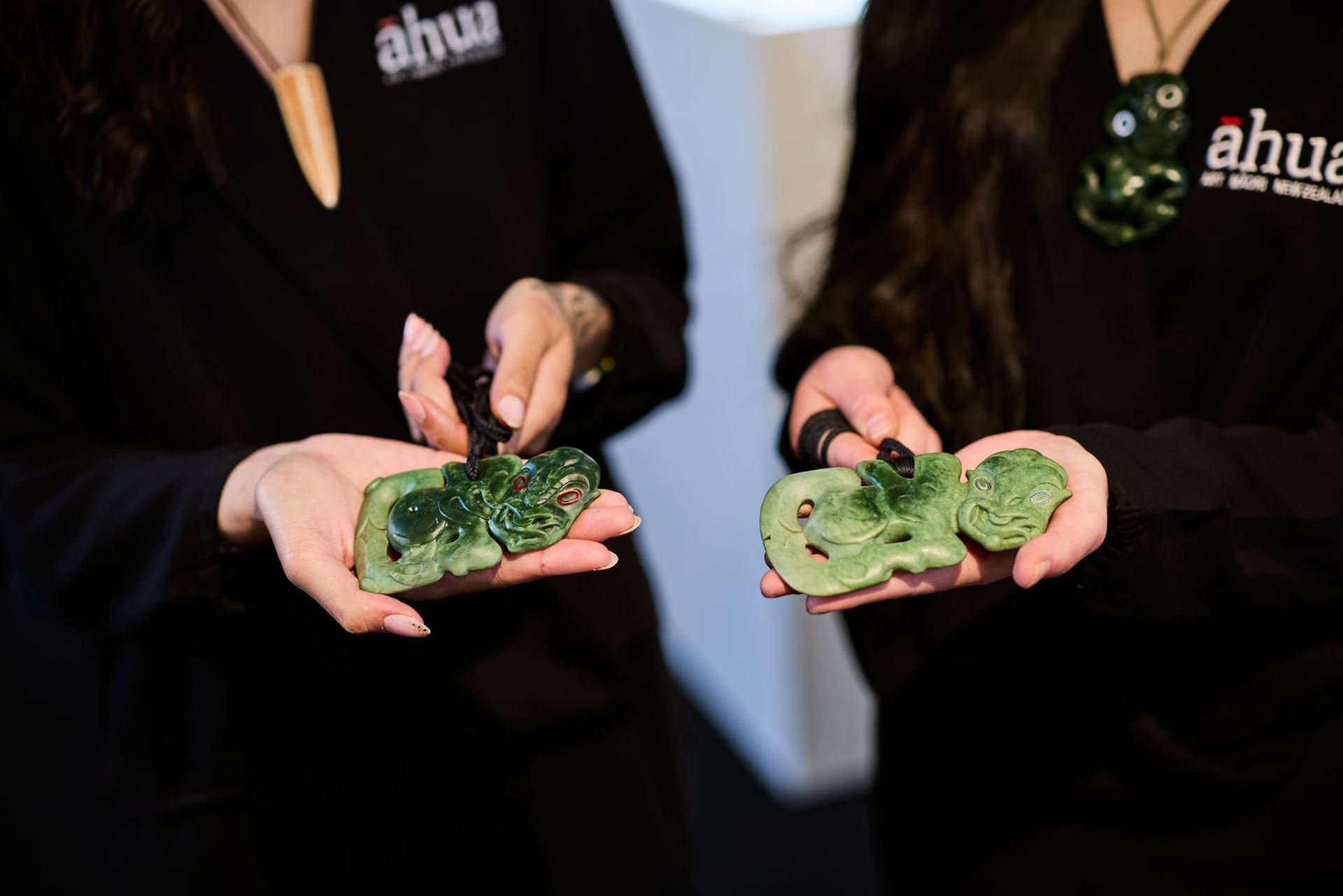
Te Takapū - National Stone & Bone Carving School
Select Subcategory
At Te Takapū, students learn the revered tradition of carving pounamu (Nephrite-Jade/Greenstone), bone and stone.
The school opened on 5 October 2009, expanding on NZMACI’s commitment to maintaining, developing and promoting the arts, crafts and culture of iwi Māori (Māori tribes) as mandated by the New Zealand Maori Arts and Crafts Institute Act (1963) (History).
The school was first led by Lewis Gardiner who is a well-regarded pounamu artist of his generation.
Stacy Gordine, a renowned artist from the East Coast of New Zealand – and uri of Hone Te Kauru and Pine Taiapa – now leads the programme and is shaping the direction of the wānanga into the future.
Would you like something custom made especially for you? Commission a piece here
Mere Pounamu - 6835HW
Mere Poumanu (hand weapon) like the patu, were often sharp at their forward edge and were used with thrusting, jabbing, and swinging blows. Māori weapons are notable for their fine sculptural form and were designed for close hand-to-hand combat. No other stone-age war implements surpassed them in deadly effectiveness. The mere pounamu is the most valuable of the Māori shorthand weapons.
Material: Pounamu (Kawakawa).
Measurements: 435mm x 97mm x 20mm
$6,500.00
Koruru Bolo Tie - 6726PD
In Māori carving there are three predominant designs for heads: the ‘wheku’ with the long eyes; and the ‘ruru’, which also has round eyes but with a point at the top. The different designs were used by carvers to illustrate the character of the subject they were carving.
Koruru are frequently found fitted to the gable of a whare whakairo (carved meetinghouse) as a representation of the tribe’s eponymous ancestor.
Material: Pounamu (Kawakawa)
Measurements: 65mm x 55mm
$3,990.00
Hei Tiki - 6177KH
Hei tiki are the best known of all Māori adornments. Tiki are symbols of fertility that depict a new-born child. They are often family heirlooms bearing personal names and embodying their wearers lineage. As with most Māori personal adornments, hei tiki are often passed down generationally.
Material: Onewa (Graywacke)
Measurements: 183mm x 101mm x 25mm
$3,500.00
Hei Tiki - 5877SG
Hei tiki are the best known of all Māori adornments. Tiki are symbols of fertility that depict a new-born child. They are often family heirlooms bearing personal names and embodying their wearers lineage. As with most Māori personal adornments, hei tiki are often passed down generationally.
Material: Pounamu (Tokatea)
Measurements: 80mm x 48mm x 8mm
$3,500.00
Hei Tiki - 0750SG
Hei tiki are the best known of all Māori adornments. Tiki are symbols of fertility that depict a new-born child. They are often family heirlooms bearing personal names and embodying their wearers lineage. As with most Māori personal adornments, hei tiki are often passed down generationally.
Material: Pounamu (Tokatea) & Pearl Shell Inlays
Measurements: 84mm x 45mm x 10mm
$3,500.00
Wheku - 5515IA
In Māori carving there are three predominant designs for heads: the 'wheku' with its long eyes; the 'koruru' with its round eyes; and the 'ruru', which also has round eyes but with a point at the top. The different designs were used by carvers to illustrate the character of the subject they were carving. The long eyes of the wheku were often used to depict a squint or frown.
Material: Kawakawa (NZ Jade)
Measurements: 113mm x 65mm x 22mm
$3,250.00
Hei Tiki - 6205MA
Hei tiki are the best known of all Māori adornments. Tiki are symbols of fertility that depict a new-born child. They are often family heirlooms bearing personal names and embodying their wearers lineage. As with most Māori personal adornments, hei tiki are often passed down generationally.
Material: Pounamu (Putiputi)
Measurements: 90mm x 50mm x 12mm
$3,200.00
Hei Tiki - 5527IA
Hei tiki are the best known of all Māori adornments. Tiki are symbols of fertility that depict a new-born child. They are often family heirlooms bearing personal names and embodying their wearers lineage. As with most Māori personal adornments, hei tiki are often passed down generationally.
Material: Pounamu (Putiputi)
Measurements: 93mm x 51mm x 19mm
$3,200.00
Koruru - 6809HW
In Māori carving there are three predominant designs for heads: the ‘wheku’ with the long eyes; and the ‘ruru’, which also has round eyes but with a point at the top. The different designs were used by carvers to illustrate the character of the subject they were carving.
Koruru are frequently found fitted to the gable of a whare whakairo (carved meetinghouse) as a representation of the tribe’s eponymous ancestor.
Material: Parāoa (Whalebone)
Measurements: 102mm x 58mm x 27mm
$3,200.00
Hei Tiki - 6184KH
Hei tiki are the best known of all Māori adornments. Tiki are symbols of fertility that depict a new-born child. They are often family heirlooms bearing personal names and embodying their wearers lineage. As with most Māori personal adornments, hei tiki are often passed down generationally.
Material: Pounamu (Kawakawa)
Measurements: 140mm x 67mm x 15mm
$3,200.00
Hei Tiki - 6215MA
Hei tiki are the best known of all Māori adornments. Tiki are symbols of fertility that depict a new-born child. They are often family heirlooms bearing personal names and embodying their wearers lineage. As with most Māori personal adornments, hei tiki are often passed down generationally.
Material: Pounamu (Putiputi)
Measurements: 102mm x 65mm
$3,200.00
Hei Tiki - 6173KH
Hei tiki are the best known of all Māori adornments. Tiki are symbols of fertility that depict a new-born child. They are often family heirlooms bearing personal names and embodying their wearers lineage. As with most Māori personal adornments, hei tiki are often passed down generationally.
Material: Pounamu (Kawakawa)
Measurements: 110mm x 71mm x 23mm
$3,200.00

